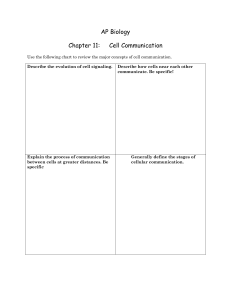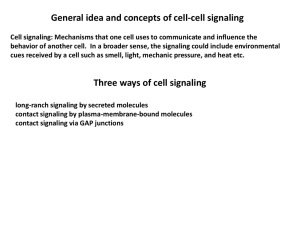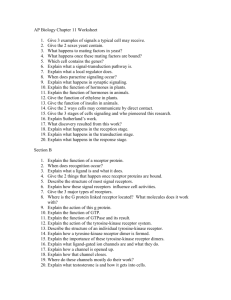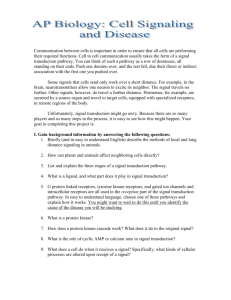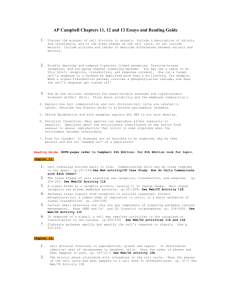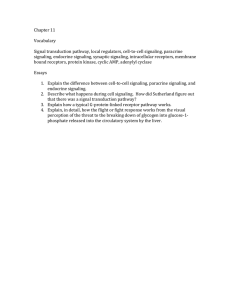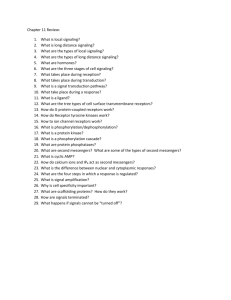File
advertisement
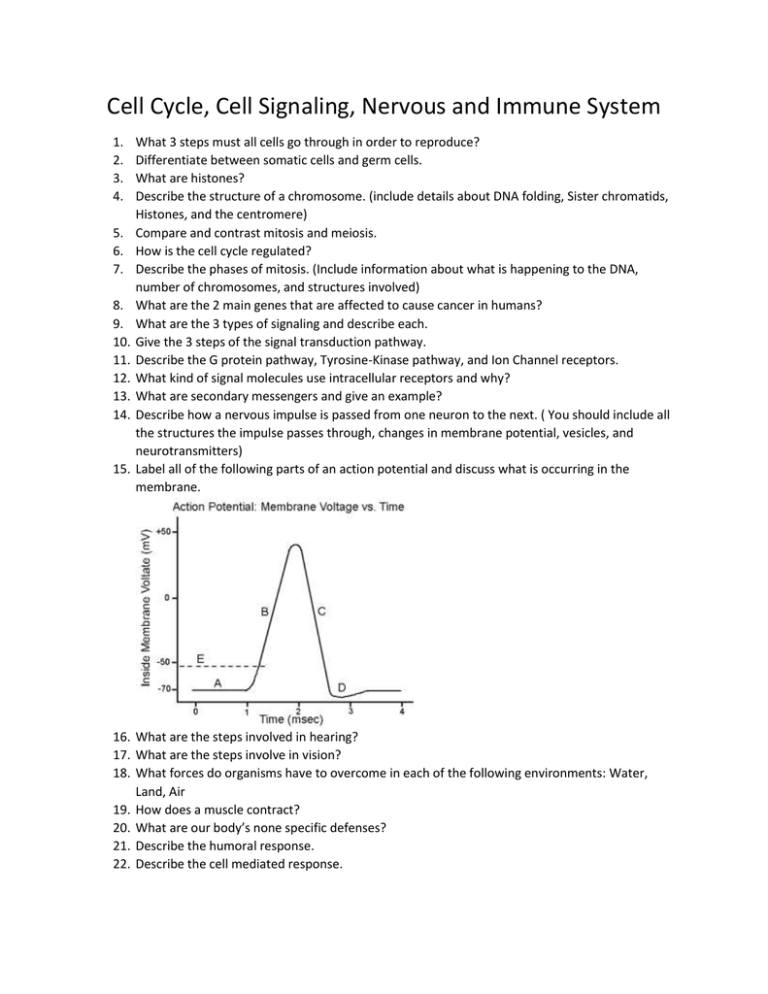
Cell Cycle, Cell Signaling, Nervous and Immune System 1. 2. 3. 4. 5. 6. 7. 8. 9. 10. 11. 12. 13. 14. 15. What 3 steps must all cells go through in order to reproduce? Differentiate between somatic cells and germ cells. What are histones? Describe the structure of a chromosome. (include details about DNA folding, Sister chromatids, Histones, and the centromere) Compare and contrast mitosis and meiosis. How is the cell cycle regulated? Describe the phases of mitosis. (Include information about what is happening to the DNA, number of chromosomes, and structures involved) What are the 2 main genes that are affected to cause cancer in humans? What are the 3 types of signaling and describe each. Give the 3 steps of the signal transduction pathway. Describe the G protein pathway, Tyrosine-Kinase pathway, and Ion Channel receptors. What kind of signal molecules use intracellular receptors and why? What are secondary messengers and give an example? Describe how a nervous impulse is passed from one neuron to the next. ( You should include all the structures the impulse passes through, changes in membrane potential, vesicles, and neurotransmitters) Label all of the following parts of an action potential and discuss what is occurring in the membrane. 16. What are the steps involved in hearing? 17. What are the steps involve in vision? 18. What forces do organisms have to overcome in each of the following environments: Water, Land, Air 19. How does a muscle contract? 20. What are our body’s none specific defenses? 21. Describe the humoral response. 22. Describe the cell mediated response. Define: Density Dependent inhibition, Anchorage Dependence, Tumor, Benign, Malignant, Metastasis, Ligand, Hormone, Pheromone, Scaffolding Protein, Integration, Oligodendrocytes, Schwann Cells, Propagation, Saltatory Conduction, Reflex Arc, Summation, Threshold Potential, Mechanoreceptors, Nocioreceptors, Thermoreceptors, Chemoreceptors, Electromagnetic Receptors, Fusiform, Chemotaxis, Antigen, Self-Tolerance,



